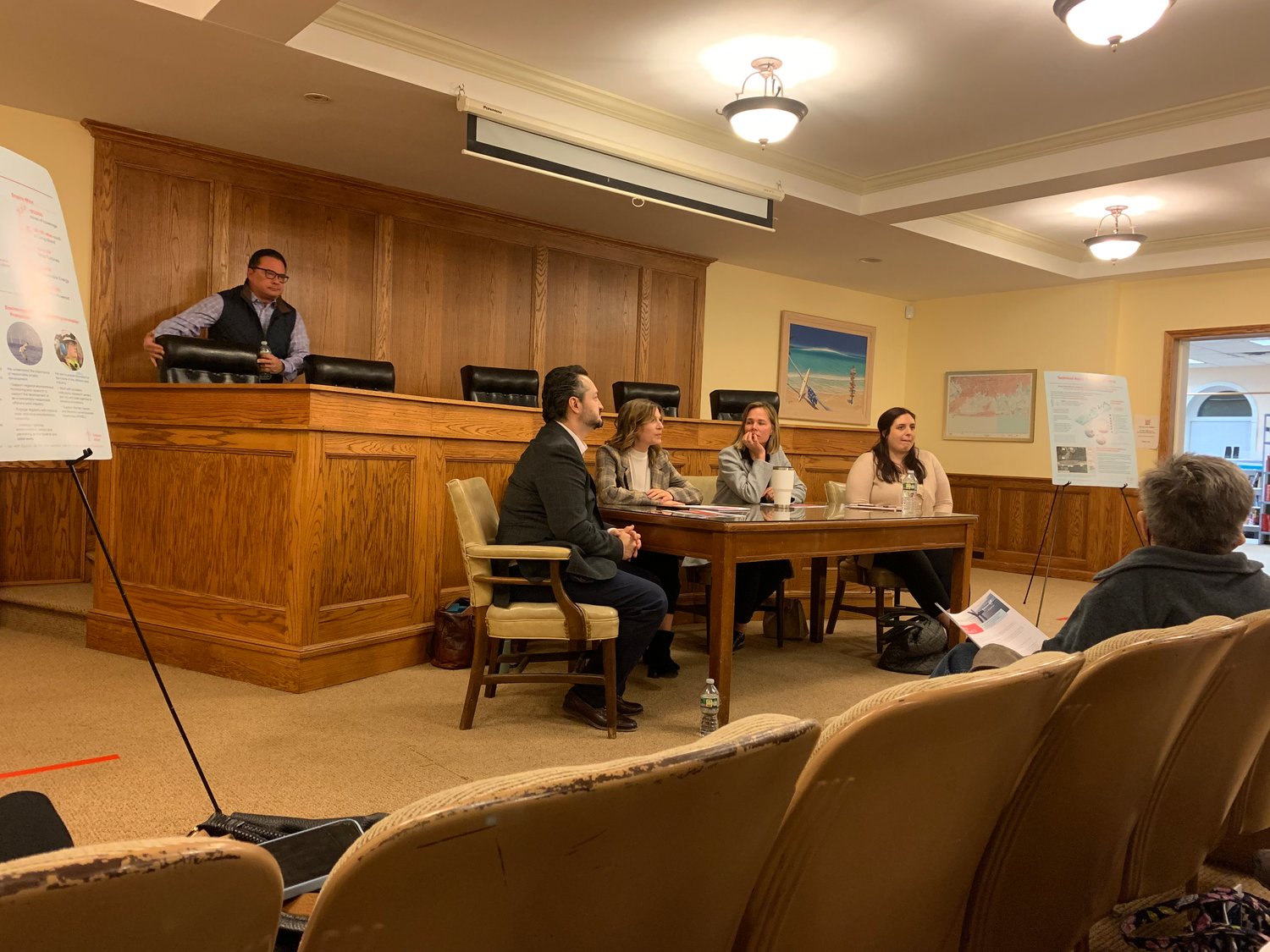Equinor officials address concerns about wind farm in Atlantic Beach
Once again last week, Equinor, a Norwegian energy company that is planning to build a wind energy farm off the South Shore of Long Island, addressed community members who had questions about how the project would impact their lives.
In Atlantic Beach Village Hall on March 22, officials from the company detailed the two-part, $3 billion project. Empire 1 would supply power to Brooklyn, and Empire 2 would supply towns on the South Shore, and connect to the E.F. Barrett Power Station in Island Park.
A total of 147 wind turbines, each 886 feet tall, would be built 15 to 30 miles offshore. The cables for the turbines would be routed underground beneath Long Beach to the power station.
Equinor’s Long Island community engagement manager, Susan Lienau, explained that the project would help achieve the state’s climate goals: a 70 percent renewable energy rating by 2030, the production of 9 gigawatts of offshore wind by 2035, 100 percent zero-emission electricity by 2040 and an 85 percent reduction in greenhouse gases.
“It’s some of the most ambitious clean energy goals really in the country,” Lienau said. “Offshore wind is a big factor in reaching (those goals) for the state, and Equinor has a big role in that.”
Some of the attendees expressed concerns about potential disturbances the project could create during the summer, when Long Island attracts visitors from around the world.
“During construction, you’re going to be building a substation that’s in my backyard,” Island Park resident Debbie Slot said to Equinor officials. “What is the noise factor, (the) safety factor? How are you protecting the community?”
“We understand there are concerns,” Equinor’s principal engineer, Alex Gomez, said. “We all love this part of Long Island, because it has this unique charm to it, and we want to make sure we maintain that.”
Linda Baessler, a longtime Atlantic Beach village trustee, said she was concerned about the possibility that Equinor’s mapping of the ocean for the project had disturbed marine life.
“What is the date you started mapping the ocean floor?” Baessler asked. “I’ve lived here for 47 years, and we have never had this problem with aquatic life until you started mapping. We’ve never had dolphins and whales washing up on our beaches, and now we’re getting quite a few, as well as New Jersey. I’m concerned.”
A dead humpback whale washed up on Lido Beach in January.
The National Oceanic and Atmospheric Administration cast doubt on the theory that offshore wind projects have been linked to whale deaths.
“At this point, there is no evidence to support speculation that noise resulting from wind development-related site characterization surveys could potentially cause mortality of whales,” a statement on NOAA’s website reads, “and (there are) no specific links between recent large whale mortalities and currently ongoing surveys.”
Jennifer Dupont, Equinor’s strategic permitting manager, who has a Ph.D. in marine science, said that the company has been monitoring ocean life, and would continue to do so if the turbines were constructed.
“If one of our vessels were to hit an animal, that would be reported to NOAA,” Dupont said, referring to the boats the company has used for the underwater mapping. “They have zero reasons not to report that to that.”
Equinor said it planned to have trained protected-species observers monitoring underwater wildlife.
“You talk about all the mapping,” Atlantic Beach resident Andrew Levey said, “but you don’t talk about the construction phase.”
Dupont addressed Levey’s concern by saying that Equinor would invest in equipment that would detect animals in order to make construction of the turbines as safe as possible.
The company hopes to make the most of its experience operating wind farms in Europe with projects in the United States.
Equinor has also held public hearings on the project in Island Park and Long Beach in recent months.
“We are going to be beholden to a foreign government for our energy,” Long Beach resident Tim Kramer said. “That is a big problem.”
Equinor spokesman Brian Young said the company is seeking construction approval from the New York State Public Service Commission. The process could take a couple of years, Young said, and if the commission gives the company the go-ahead, construction would begin in the mid-2020s.






